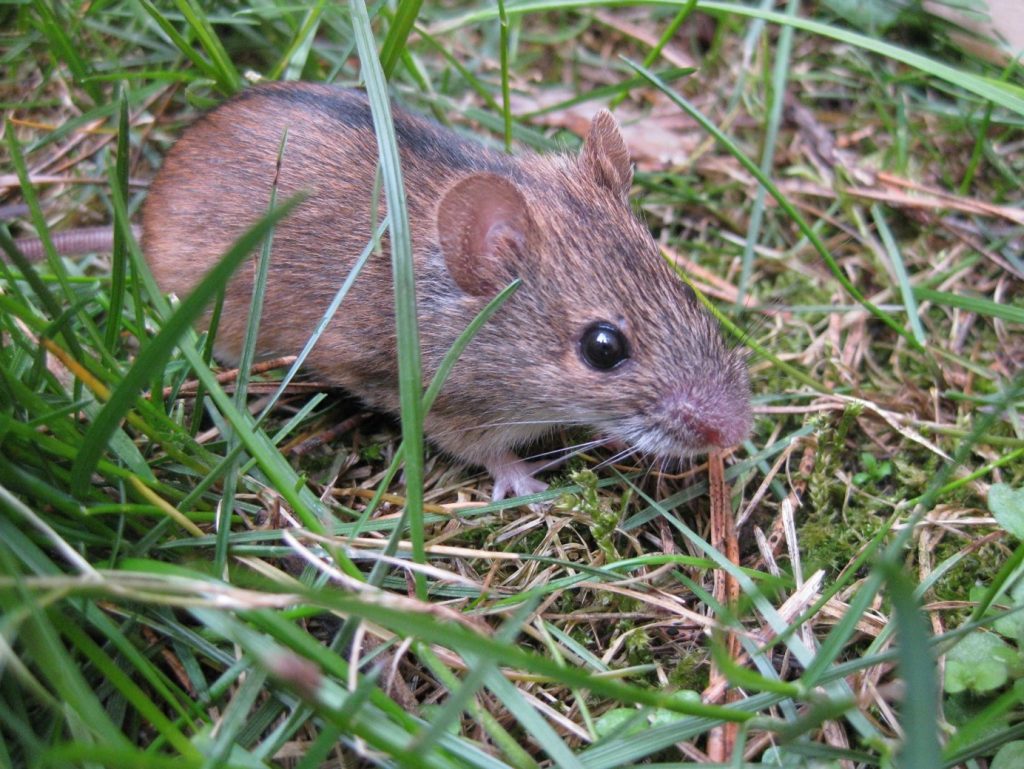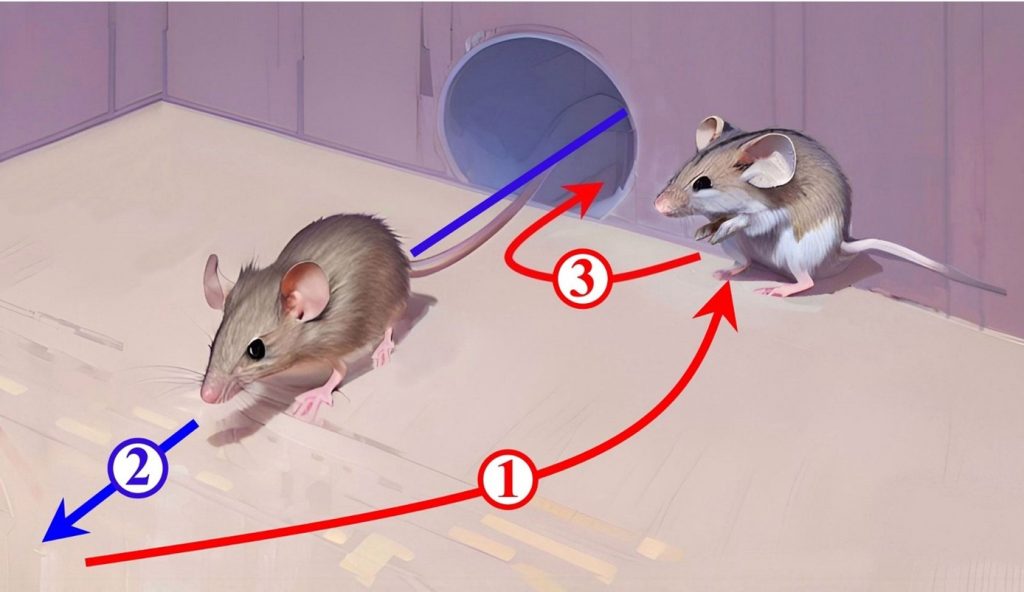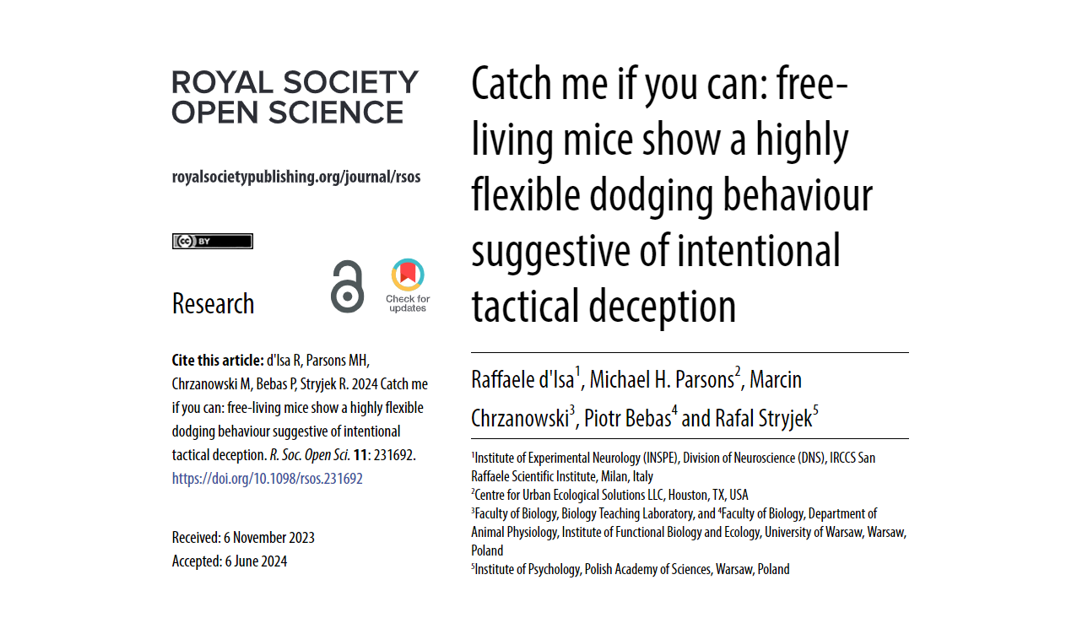(English version below)
Złap mnie, jeśli potrafisz!
Myszy są mistrzami ucieczki. Jednak czasami czujność wobec niebezpieczeństw i szybkość biegu nie wystarczają. W niektórych przypadkach potrzebna może być bardziej subtelna obrona: oszustwo. Międzynarodowy zespół badaczy z Polski, Włoch i Stanów Zjednoczonych pod kierownictwem dr hab. Rafała Stryjka, prof IP PAN, z Instytutu Psychologii PAN przy pomocy komór doświadczalnych umieszczonych w podwarszawskim lesie, obserwował zachowania wolno żyjących myszarek polnych (patrz ryc. 1) przez ponad rok. Analizując nagrania, badacze byli zaskoczeni stopniem sprytu, jaki wykazywały myszarki podczas ucieczki przed innymi myszarkami konkurującymi z nimi o pokarm (patrz ryc.2).
Artykuł opublikowany przez ów zespół w czasopiśmie Royal Society Open Science, wskazuje, że dzikie myszy mogą być poznawczo zdolne do dokonywania intencjonalnego oszustwa – zachowania wymagającego bardzo wysokich zdolności poznawczych przypisywanych dotychczas głównie ludziom, krukowatym i wyższym naczelnym. Obserwacja ta może mieć znaczenie nie tylko dla psychologii gryzoni, ale także, bardziej ogólnie, dla dziedzin zajmujących się intencjonalnością u zwierząt i teorią umysłu.
Pełna treść artykułu dostępna jest TUTAJ. d’Isa R, Parsons MH, Chrzanowski M, Bebas P, Stryjek R. 2024
Catch me if you can: free-living mice show a highly flexible dodging behaviour suggestive of intentional tactical deception. R. Soc. Open Sci. 11: 231692. https://doi.org/10.1098/rsos.231692
Catch me if you can!
Mice are masters of escape. However, sometimes vigilance towards dangers and running speed are not sufficient. In some cases, a more subtle defense may be needed: deception. An international team of researchers from Poland, Italy, and the United States led by prof. Rafał Stryjek from the Institute of Psychology of the Polish Academy of Sciences used experimental chambers placed in a forest near Warsaw to observe the behavior of free-living striped field mice (see Fig. 1) for over a year. Analyzing the recordings, the researchers were surprised by the level of cunning displayed by the mice when escaping from other mice competing with them for food (see Fig. 2). An article published by this team in the journal Royal Society Open Science, suggests that wild mice may be cognitively capable of intentional deception – a behavior requiring very high cognitive abilities previously attributed mainly to humans, corvids, and higher primates. This observation may be significant not only for rodent psychology but also, more generally, for fields dealing with animal intentionality and theory of mind.
The full text of the article is available HERE. d’Isa R, Parsons MH, Chrzanowski M, Bebas P, Stryjek R. 2024
Catch me if you can: free-living mice show a highly flexible dodging behaviour suggestive of intentional tactical deception. R. Soc. Open Sci. 11: 231692. https://doi.org/10.1098/rsos.231692
Direct correspondence to:
Rafal Stryjek
Institute of Psychology
Polish Academy of Sciences
rstryjek@psych.pan.pl

Figure 1. Black-striped mouse (Apodemus agrarius). / Figure 1. Black-striped mouse (Apodemus agrarius). Photo by Rafał Stryjek.

Rycina 2. Graficzne reprezentacja podstawowych etapów wspólnych dla dwóch rodzajów zwodniczego uniku. Etapy zachowania prezentowane przez ściganą i ścigającą myszarkę są oznaczone odpowiednio kolorem czerwonym i niebieskim. 1) Ukrycie się: jedna myszarka znajduje się wewnątrz komory, naprzeciwko wejścia. Po usłyszeniu dźwięku nadbiegającego agresora oddala się od spodziewanej trajektorii jego ruchu docierając do bezpiecznego miejsca tuż przy ścianie obok wejścia. 2) Pozostawanie w ukryciu poprzez bezruch i ciszę: po wbiegnięciu agresora do komory i widocznym zaskoczeniu brakiem ściganej myszarki w oczekiwanym miejscu, ścigana myszarka pozostaje nieruchoma i cicha w strefie ukrycia, podczas gdy agresor próbuję ją wykryć. 3) Wykorzystanie rozproszenia uwagi: ścigana myszarka wykorzystuje rozproszenie uwagi agresora oraz bliskość wyjścia do ucieczki, a tym samym do uniknięcia bezpośredniej walki. Źródło: d’Isa et al., 2024. / Figure 2. Graphical representation of the essential stages common to two types of deceptive dodge. Actions performed by the chased mouse and the chasing mouse are represented in red and blue, respectively. 1) Hiding: one mouse is inside the chamber, in front of the tube, and, upon hearing an incoming second mouse, it moves away from the interception trajectory, reaching a safe spot lateral to the tube. 2) Concealment through immobility and silence: after the chaser enters the chamber and is deceived by finding the chamber seemingly empty, the chased mouse remains immobile and silent in a hideout zone, while the chaser is looking for it. 3) Exploitation of the target’s distraction: the chased mouse exploits the chaser mouse’s distraction and the entrance tube’s availability to escape, avoiding a fight. From d’Isa et al., 2024.

